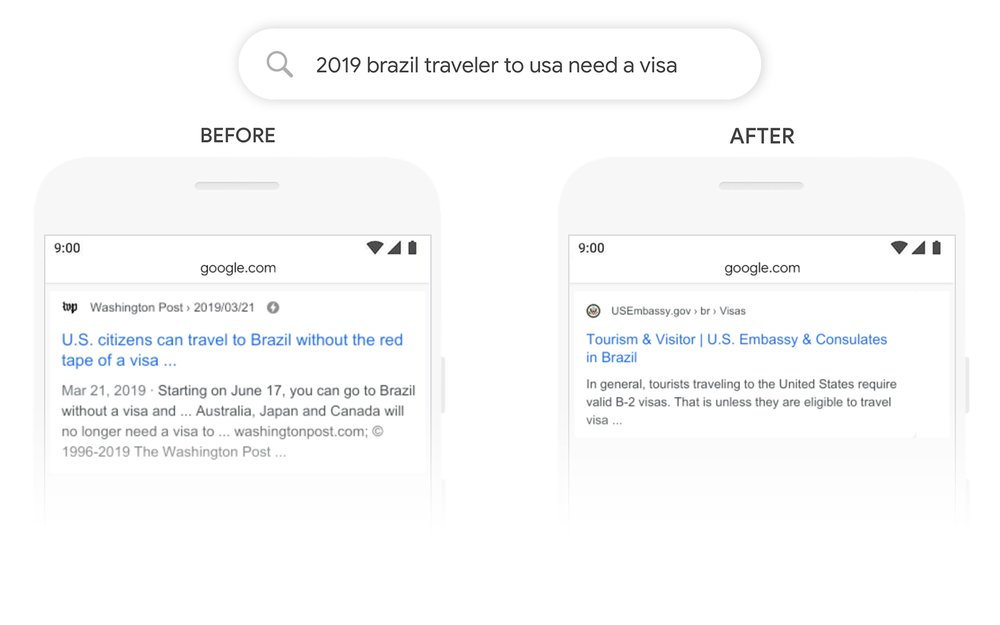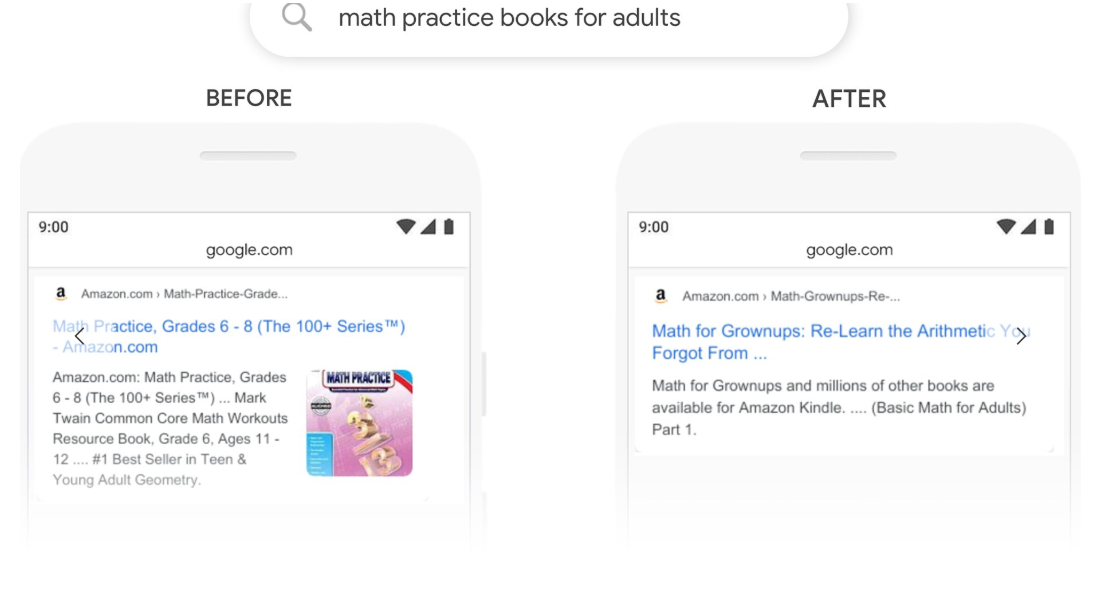Optimizing for Google BERT Update. How Is That Even Possible?
20 November 2019 Leave a comment ALL-HANDS SEO, CONTENT MARKETING
A new Google update… We know what you are thinking about. Should I even care? The new updates are released so often, that lots of business owners do not delve into the details. But this time, you should take a closer look.
As Google states, BERT will impact 10% of search queries, which means an alarm signal for SEOs. This update is the second biggest after RankBrain, and it is worth your attention.
Are you ready now? Before rushing to make any changes in your content, let’s first figure out what BERT is about and what it matters for SEO.
What Is the BERT Update About?
BERT (“Bidirectional Encoder Representations from Transformers”) is a technology developed to understand natural language queries. In other words, Google can better discern what stands behind a query and what it means for a searcher.
There are nuances in our languages that we can understand easily, but it is not that obvious for search engines. Let’s say you use “eight to four” in one query and “a quarter to four” in the other. The “to” has slightly different meanings, and Google should be able to understand that.
Google open-sourced BERT in November 2018, which means any individual can make her contribution.
Officially, BERT started rolling out in October 2019 for US English queries. In the future, Google plans to expand this algorithm to all Google Search languages, but we do not know any specific timeline for that yet.
How Does BERT Work?
To explain how BERT works, we need you to understand the three basic terms:
- A language model is, strictly speaking, the language’s grammar structure which means that a specific word will follow another with a certain probability. It is an essential part of Natural Language Processing.
- Ordered training is the type of language model training when words are analyzed left-to-right or right-to-left.
- Bidirectional training is the type of language model training based on the set of words regardless of their order in a phrase or sentence.
The innovative power of BERT is the ability to train language models bidirectionally, i.e. perceiving a phrase or a sentence as a whole, not its separate words followed by one another. Google provides several BERT examples for better understanding.
Let’s say we have a query “2019 brazil traveler to usa need a visa”. The word “to” has multiple meanings in English, so it is vitally important to understand the meaning in each search. In our case, we mean a Brazilian that travels to the US and not the people from the US traveling to Brazil. Previously, Google didn’t see the difference.
BERT clearly understands this nuance and provides results solely for travelers from Brazil. This is the change:
Another example is “Can you get medicine for someone pharmacy”. This search asks whether someone can buy medicine under prescription instead of the patient herself. Before BERT, Google would miss out on the “for someone” part and leave a searcher frustrated. Now Google understands the whole phrase in details:
In the query “math practice for adults”, the word “adults” is essential, but Google provided results with “young adults” which is not exactly the meaning of the query. BERT understands that a person searches for a book for grownups, so here is the result:
For BERT, every word counts. It allows for enhancing the quality of search and always being on the same page with users.
BERT vs. RankBrain: What Is the Difference?
For those who know about the RankBrain algorithm, BERT would first look somewhat similar. Nevertheless, these two updates both play unique roles in improving online search.
What do we know about RankBrain? It works along with other organic search algorithms and adjusts the search results to make them more precise.
The flow looks like this: RankBrain analyzes a query and then looks back at the previous similar searches. It would review the results of the previous queries and make adjustments to the search happening right now.
RankBrain also has this ability to interpret search phrases and help identify necessary results even though they do not contain any keywords from the query.
What about BERT? It works completely different. In this case, the bidirectional training we’ve mentioned before is the main working principle. Again, there are traditional search algorithms that help users to find information. But they work only in the specific order: left-to-right or right-to-left (ordered training).
Strictly speaking, BERT knows best how to process natural human language, the way we communicate.
What do they have in common? Both BERT and RankBrain were created to better understand what people want to say and what exactly they want to find. Every word counts, but the meaning appears in the combination of words.
BERT is not replacing RankBrain – they should work together if necessary. The more tools Google has to understand users, the more chances to meet the expectations of the most demanding searchers.
What Does BERT Mean for SEOs?
Will it be some revolutionary changes to your rankings or traffic? Probably not. Let’s look at the issue from the SEO point of view.
For now, we know that BERT analyzes 10% of English queries with a complex structure. Remember that BERT pays attention to nuances in phrases, so it concerns long-tail queries. If you type the celebrity’s name or something simple like “Thanksgiving 2019”, there is nothing for BERT here.
When it comes to your website, it is hard to predict how much BERT will affect it. Does it mean that 10% of your website’s queries will be impacted? No, it is not. This number can be bigger or smaller depending on the branch you work in.
How much are you dependent on BERT? Three main factors may answer this question:
- The content you create;
- The online behavior of your target audience;
- Your current traffic.
Let’s say you have a blog with articles written in conversational English for your target audience, then probably, BERT will somehow impact your site.
Being affected by BERT is not necessarily a bad thing. It may change the competition on your market and bring you new leads and rankings. What should you know to get ahead under new market conditions?
BERT Optimization Hacks: What Do We Know So Far?
We are putting it straight right away: according to the official Google statement, there is nothing you should optimize for BERT. The one fundamental concept remains unchanged: focus on high-quality content at all times.
Let BERT be one more reason to take a closer look at your content, consider your writing, and review your content strategy. Here are a few tips for the new website revision.
1. Create Content for Readers
There is a great temptation for SEOs to treat content as a technical instrument to get to the top of SERPs. What metrics play the main role in this case? Word count, keyword density, keyword placement, etc. – all these aspects do matter for search engines but won’t mean a thing for users.
Your content should be the best option for readers in the first place. Write naturally and speak directly to the reader – these are the things to keep in mind.
BERT is an algorithm that understands contexts behind phrases and sentences, so while your reading should be natural, it should also remain clear and straightforward.
Follow three simple rules:
- Do not overdo with adjectives and complex figures of speech;
- Get straight to the point and use words that people can easily understand (it depends on the industry);
- Keep your content up to date and always write about current news, problems, and tendencies.
First, it seems these tips are useful only for your readers, but the smarter Google becomes, the more it can understand a text without heavily-loaded technical SEO tools.
2. Answer Questions
Asking questions and answering them is a natural way to have a conversation, and users should have a similar experience with Google Search.
At the same time, voice search is a growing trend now, so focusing more on questions than keywords means optimizing for two trends altogether.
Google mentions the issue in the article introducing BERT:
“While we’ve continued to improve our language understanding capabilities over the years, we sometimes still don’t quite get it right, particularly with complex or conversational queries. In fact, that’s one of the reasons why people often use “keyword-ese,” typing strings of words that they think we’ll understand, but aren’t actually how they’d naturally ask a question”.
The conclusion is clear: all brands should focus more on answering questions as Google is actively trying to provide conversational patterns to the search.
Also, targeting certain questions can help win featured snippets – a dream come true for any SEO expert or business owner. Featured snippets not only raise awareness about your brand but also make it an opinion leader among competitors.
3. Create Topic Clusters and Use Long-Tail Keywords
A topic cluster is a group of subtopics linked by one broad topic. The idea is to create several articles that have one common subject and connect these articles with hyperlinks on your blog.
As we previously mentioned, BERT does not focus on separate keywords, that is why showing your expertise in a particular subject makes more sense. Each article from the topic cluster implies using various long-tail keywords because you cover specific aspects of a broader term.
This is a win-win strategy: on the one hand, you get more noticeable for BERT, on the other, you create a more authoritative blog for your industry.
The Future Is Around the Corner: Get Your Content Prepared
Google has sent enough signals to SEOs that content is king. Always. And for any branch. Is BERT a disturbing message for content creators? No, it is not. But it should definitely serve as a wake-up call to check your website once again and find new ways to adapt it to the latest Google demands.
Strictly speaking, there is only one global demand – make your content better and never stop improving your content strategy.
From now on, Google is doing its best to understand the contexts and meanings in search queries, which means you can use more long-tail keywords and answer questions typical for your industry.
Google is growing, and so should your content. Want to get higher rankings? Do not be afraid to change and transform what you already have.
Tags: content, content management, Google update, Google Updates
Like this article? There’s more where that came from.
- 5 Questions to Ask Yourself Before Paying for Rank Tracking Software
- 5 Serious Mistakes Beginner SEOs Make and How to Fix Them
- Why We Use Google’s New Link Attributes and You Should Too
- Title and Description in 2021: Why Google Rewrites SEOs’ Meta Tags
- What We Should Learn From Google’s “About This Result” Feature








